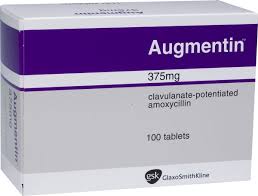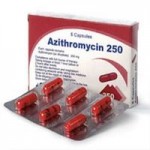Augmentin is a combined broad-spectrum antibiotic, fighting any bacterial infections, caused by microorganisms, sensitive to clavulanic acid or amoxicillin. It is quite powerful antibiotic, so you should read the instructions before using Augmentin; learn its pharmacological action, ways of applying and the existing contraindications.
Indications for use
Augmentin is an effective antibiotic, fighting acute and chronic bronchitis, upper respiratory infections, lobular bronchial pneumonia, pulmonary abscess, empyema (pus accumulations), urinary tract infections, urethritis, pyelonephritis, bacterial infections, and blood infection in abortion, syphilis or gonorrhea. Besides, this drug is effective for the treatment of osteomyelitis (inflammation of the bone marrow), peritonitis (inflammation of the abdominal cavity), septicemia (blood infection by microorganisms), and also postoperative infections.
Ways of applying and doses
Before using the drug, the patient should define the sensitivity of microflora, caused the disease to Augmentin. The doses of drug are prescribed individually, depending on the sensitivity of pathogen, localization of infection and severity of disease.
Contraindications
Augmentin is contraindicated to the people with hypersensitivity to the active substance or other drug ingredients. Patients with severe liver dysfunctions should take the drug intravenously with great caution. In case of erythematous rash or urticaria, the treatment must be stopped. Augmentin is prohibited at the time of pregnancy or lactation. The patients prone to allergic reactions should take the drug carefully.
Side effects
In rare cases, the use of the drug can cause eating disorder. The severity of these disorders can be reduced if you take this antibiotic during meals. Medicine describes the isolated cases of developing cholestatic jaundice, hepatitis and liver dysfunction after the use of the drug. On rare occasions, the use of Augmentin can cause stomachaches, Quincke’s disease or urticaria, and also anaphylactic shock or polymorphic erythema, with an increase of temperature and the reddening of patches of skin. In some cases, this drug can cause exfoliative dermatitis, with peeling and reddening of the skin, candidiasis and other infections.





